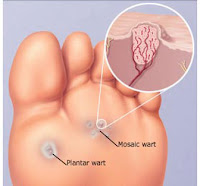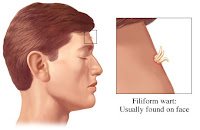Often misinterpreted as a disease, blood pressure plays a vital role in the functioning of human body. However, blood pressure can change rapidly and vary by multiple causes such as stress, physical exercise or certain foods, which may eventually cause serious health issues.
Therefore, it is important to know
how to measure blood pressure on a regular basis. Doctors often insist on systematic measuring of blood pressure, but rarely teach the patients how to do it. Which is a big mistake, as measuring blood pressure requires some training and incorrect technique can provide false results.
How to interpret blood pressure values?
Being knowledgeable about
how to take blood pressure at home, provides you valuable information about the state of the circulatory system, in addition to giving clues about kidney diseases and other disorders. It is important to measure it frequently since hypertension does not cause symptoms.
Currently, there are tensiometers that allow electronic measurement of blood pressure at home easily and conveniently. They give the values in digits, and although they are less accurate than the traditional model, they are very practical because they take the two readings quickly and do so autonomously.
Blood pressure is expressed with two numbers separated by a bar: for example, 140/90 mmHg (millimeters of mercury).
Maximum or systolic tension: it is the first reading, in our example 140. This measures the maximum pressure with which the blood circulates inside the arteries and corresponds to the moment when the heart is contracting and expels blood under pressure.
Minimum or diastolic tension: it is the second reading, in our case 90, corresponds to the minimum pressure that the blood exerts on the wall of the arteries in the intervals between heartbeat and heartbeat. Corresponds to the moment when the heart relaxes.
What are the normal values of blood pressure?
The values of the maximum or systolic tension are normal when the figure is less than 120 mmHg in young people and 130 mmHg in elderly people.
Normal values are considered for the minimum or diastolic tension when the figure is below 80 mmHg. When it is higher, it is considered that there is arterial hypertension.
How to check blood pressure at home?
Taking blood pressure tests at home has become common for people nowadays. It has become essential for them to treat or balance a certain health condition. If you do this, you should thoroughly know
how to check blood pressure and keep a journal or record of the measurements.
This record helps your doctor understand the pattern in which your blood pressure changes throughout the day. If you are on any kind of medication to keep your blood pressure under control, this data helps to know if they are working properly or not. If you a have a fine knowledge of
how to take blood pressure step by step, it can help you to participate in caring for your own health.
How to take blood pressure step by step?
To start with the position should be seated, with the back and arms supported and the legs not crossed. You should avoid any previous physical exercise and rest for at least 5 minutes before taking the test. It would be perfect if you can rest for 10 minutes before the test.
Also, avoid any isometric (force) activity prior to or during the test, for example, keeping your arm up. Do not take the shot with any discomfort like a full bladder, itching, uncomfortable position, pain, etc.
To understand
how to measure blood pressure like a professional, you should know that other than being physically relaxed it is important to be mentally relaxed before the test. Sit in an environment that is calm and comfortable, preferably minimally dark. Remember, you have to relax beforehand to measure. If you do not succeed, consider postponing the shot for another time.
Try to minimize mental activity by not talking much, not thinking much about the result that will come out and any such things that can deviate the test results.
Avoid consumption of caffeine or tobacco the previous 15 minutes. Do not intake any drugs for arterial hypertension. It is preferable to take the test empty stomach, but remember that your bladder must be empty.
Never take blood pressure if you are very nervous or have some type of pain unless you think that your symptoms may be due to a rise in blood pressure or your doctor has indicated.
What type of equipment should be used?
Another very important point is the type and conditions of the equipment.
1.
An arm cuff is preferred over a wristband.
2.
It must be an automatic device and be validated (officially approved)
3.
It must be calibrated in the last year. It can be checked at a pharmacy or in primary care. Some of the most trusted brands are
Omron,
HealthSense, and Rossmax.
4.
The size of the cuff should be appropriate for your arm:
- The small sleeve is used for an arm circumference of 17 to 22 cm,
- The medium for a perimeter arm between 22 and 32 cm and
- The large cuff is used for an arm circumference between 32 and 42 cm.
How to measure blood pressure with sphygmomanometer?
- Avoid clothing that compresses the arm. If necessary, the shirt or shirt will be removed. Make sure that in that case, the temperature of the room is adequate.
- Select the arm with the highest pressure and place the sleeve of the correct size without pressing.
- Ensure that the position of the cuff in the arm is correct: the lower limit of the cuff should be 2 fingers above the fold of the arm-forearm (antecubital fossa).
- Ensure that the arm position is correct. The cuff should be at the level of the heart
- Determine blood pressure in both arms the first time. If you measure the pressure frequently, it is not necessary to always take it in both arms. In that case, you should measure it only in the dominant arm, which is where you tend to get higher values.
- At least 2 measurements should be taken, even 3 if the difference is> 5mmHg.
How often should Blood Pressure be measured?
Like everything in medicine, it depends on the person. The higher the cardiovascular risk the patient has or the more uncontrolled the blood pressure is, the more frequently it should be measured.
Patients without known arterial hypertension
-
Once a year from 40 years of age on healthy people
-
Once a year at any age in people with risk factors such as overweight, obesity, African-Americans or previous values in the limit (from 130 to 139 / 85-89 mm Hg)
-
Every 3-5 years for adults 18 to 39 years of age with blood pressure lower than 130/85 mm Hg and who do not have any risk factor
Patients with known arterial hypertension
-
In general, if the blood pressure is well controlled, it is enough to take the pressure once a month. Of course, the day it is taken, it should be measured in an adequate way by taking 2-3 shots in the morning and 2-3 shots just before dinner (4-6 shots in total).
-
On the other hand, if the blood pressure is out of control, it should be taken every day both in the morning and at night. If the numbers are high you should go to the doctor as soon as possible. Or if symptoms appear, you should go to the doctor immediately.














